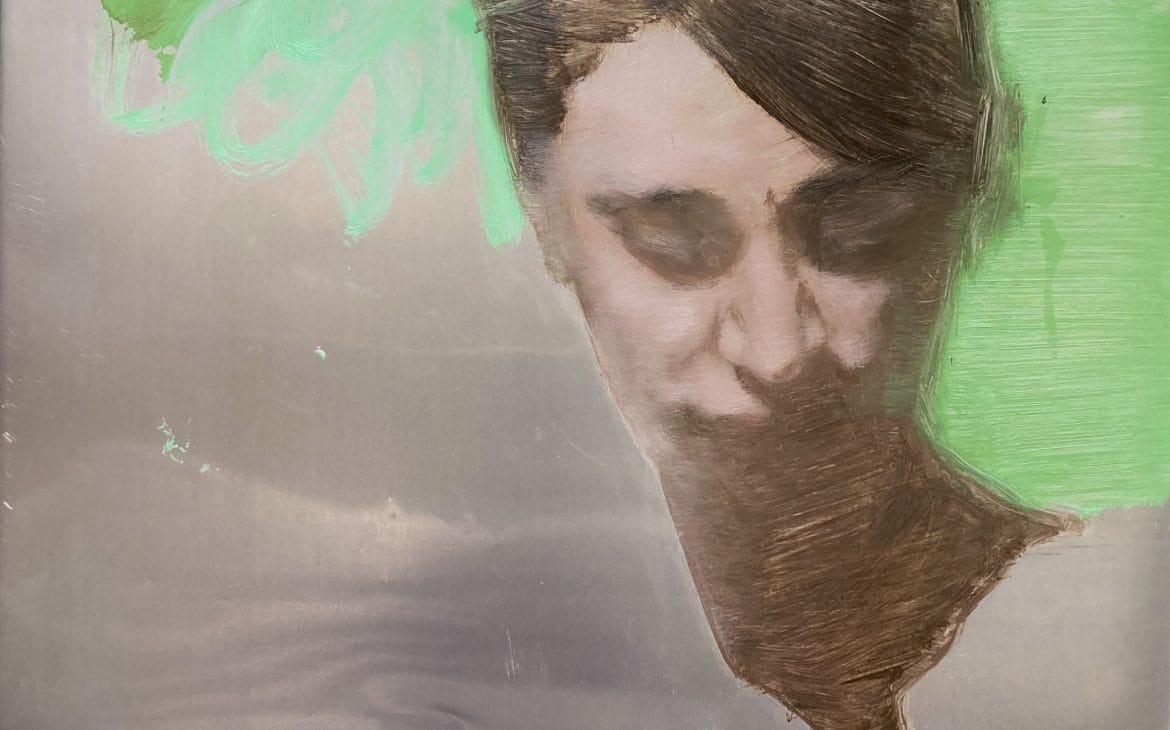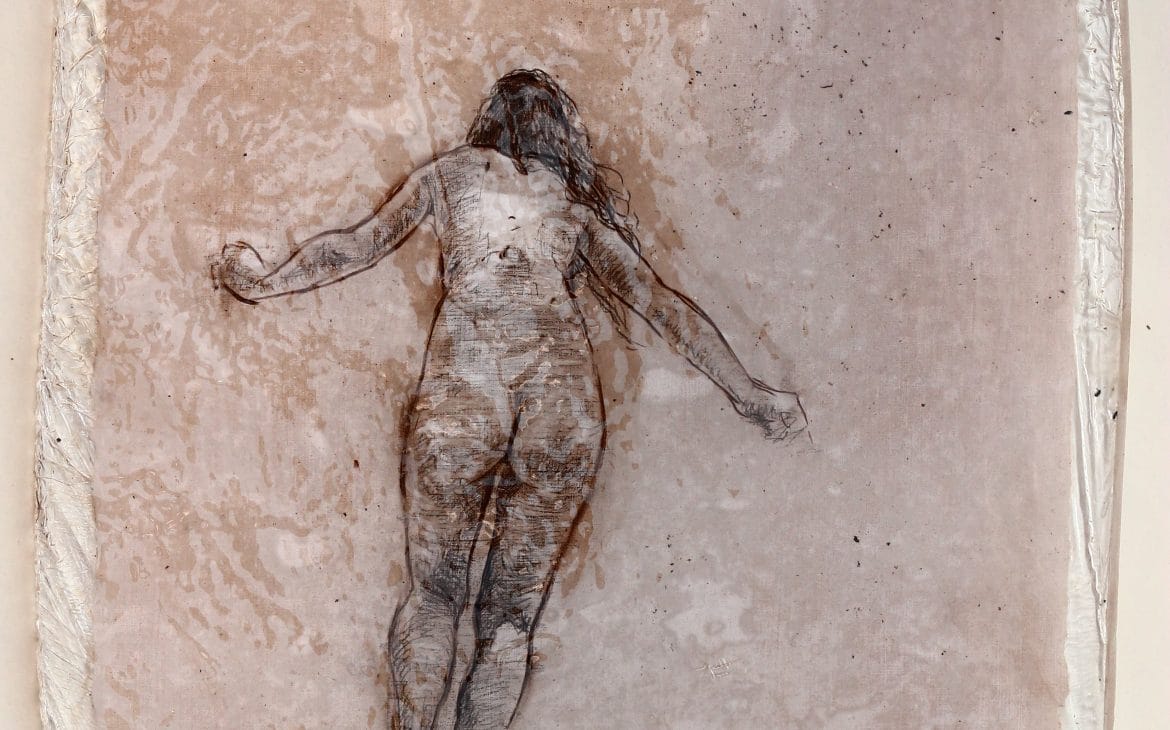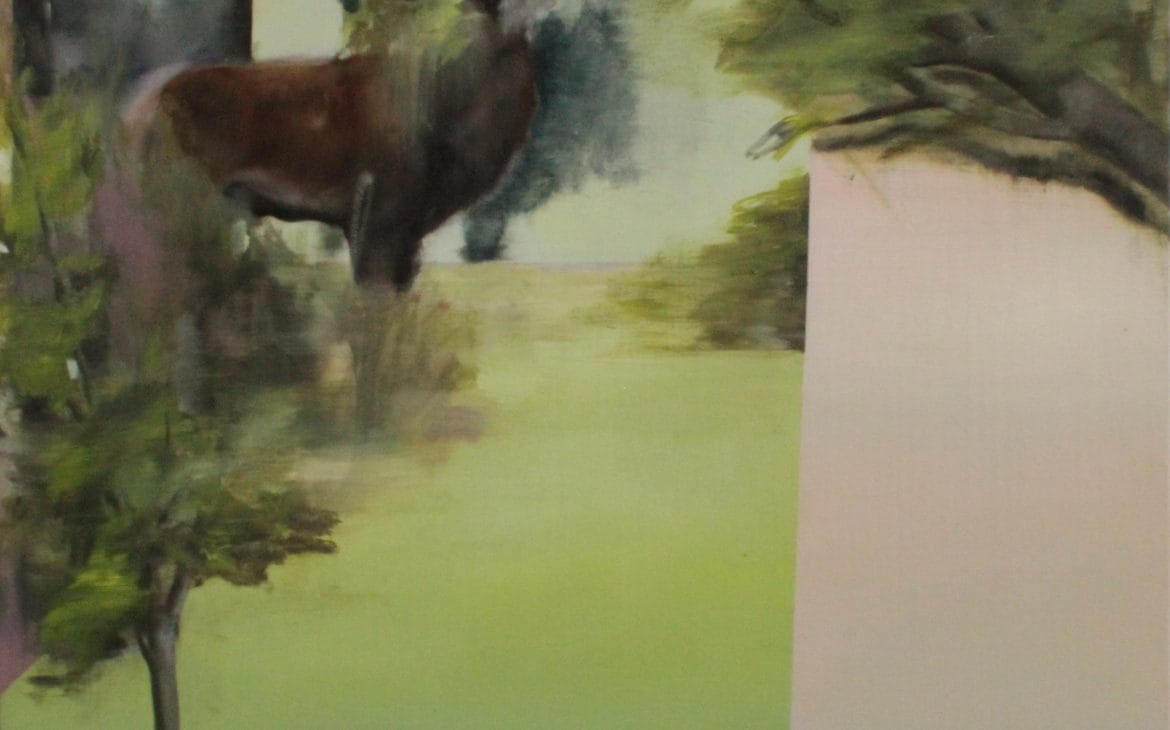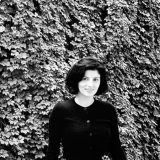Born in Bacau in 1988, Diana Manole graduated from the National University of Arts in Bucharest in 2012. Diana Manole is a declared advocate of figurative art. She practices painting, more precisely oil painting, in a traditional manner, while being open to experimenting and exploring the relation between painting and new media. Part of numerous group exhibitions, Diana Manole’s works have been noticed by collectors and specialists in visual arts. For the Romanian artistic community, Diana Manole is an emerging artist with a lot of potential. She currently lives and works in Bucharest.
When did you feel that your purpose was to be an artist?
Most likely when I chose the high school profile, that is when the question “what do you want to do when you grow up?” became more serious. That is when I realized it, it became real.
What does art mean to you?
When I took the college entrance exam, we were asked what art means to us. Then I did not know what to answer, instead, a colleague said that for her art is everything. I still remember now that I found her answer somehow exaggerated, slightly syrupy. Then, for my master’s degree, I decided to give to SNSPA, and somehow that experience took me away from my usual schedule. Only then, did I understand what my colleague meant. I did not realize that art was everything to me, because I was always in it, I had to take a step outside of it to understand that.
We live in a capitalist society that emphasizes production, consumption, profit, and success. You sell, you are a successful artist. To what extent does the current social order influence your choices, your goals, your ideals, and your intentions?
It does not influence me as much as it did before. Art is now like fashion houses, it is fast-forwarding, so I have to wait, or rather be prepared for when my wave comes. Everything is in motion, including economic patterns, we can now witness the pinnacle of capitalism. What is coming? Only time will tell us.
What is your relationship with the artistic environment? Have you ever felt marginalized because you chose a traditional medium at a time when most artists choose to make conceptual art and explore new media?
I tried to adapt my traditional style to the new conventions, the results of some experiments that I later integrated into my technique, but over time I realized that I have to stick to what I know best to do, otherwise I will get lost mimicking the contemporary. I appreciate good work, whether figurative, abstract, new media, or performance if it has an idea, a concept, an emotion, or an aesthetic structure. Most of all I dislike the works that are supported only by the artist’s story. The drama of my life does not make me play the piano any better, especially when I do not even know how to play the piano. Conceptual art? But Rembrandt also had a concept when he made the Night Watch. The works release the emotion of the artist, that is why it is not the story that prevails, but the idea of the artist. From my point of view, the artist must have a thought above him, a philosophical one, universal thought that goes beyond the limit of perceptible knowledge. The medium of expression he chooses matters less. That is what I have tried to do in my Back to Nature projects.
You have collaborated with a contemporary art gallery from Bucharest. What did the collaboration mean to you?
Any collaboration brings more experience, it is a lesson for the future. The partnership focuses on how much everyone wants to offer and then we talk about reciprocity. The group exhibition projects that I have organized or where I was invited to participate gave me a sense of accomplishment, in the materialization of the artistic plans. Your experiences and how you manage them shape your identity.
Do you think an artist can become famous on his own or only collaborating with an art gallery can guarantee his success?
The gallery, most of the time, comes after the artist struggles well on his own. If the “gallery” sees that the artist has “visibility”, then the gallery invites him over to them (she laughs). Yes, the gallery, but it also depends on the gallery, can guarantee the success of anyone. Sometimes it does not even matter how good you are (because art is something subjective, isn’t it?), the guarantee of artistic quality can be given by the status of the gallery. The artist and the gallery are in a symbiosis relationship, they represent each other. A gallery will fight for the image of its artists, and it will do so, especially in the art market. He will do his best to guarantee him the best possible share, especially at auction houses. Although there are more galleries than there were in 2006, the year I entered college, that does not mean that they are enough to support the number of art graduates. And this is due to the economic environment in Romania, where we cannot talk about art either as a spiritual investment, or a monetary one. For those few collectors that Romania has, old art is easier to trade because artists are missing from the equation. Of these collectors, there are a few who like to risk, and they try their luck with contemporary artists, hoping to catch the next Ghenie. And from the latter, there are also a handful of collectors who buy primarily for themselves and because they like art. Galleries help the undecided ones.
What does it mean to be an artist in Romania?
Good question. Anyway, the artist is a kind of entrepreneur with or without a gallery, the artist must know how to sell himself. Now with social media and the World Wide Web, things should be easier, but it is not always like that. A successful example of this is Banksy. The artist has a bohemian image and he is a creative person for some people, but for the vast majority, he is just a slacker. The pandemic has made us realize this image the best. That is wrong because people are not aware of how much of the artists’ work is integrated into their lives, from advertisements and urban architecture to the aesthetics of their social media pages. People feel the need to surround themselves with beautiful things, it is a physical need, even if the beauty of one can be kitsch; after all, there is a primitive emotion that must be satisfied. Artists offer it, take it from nature, process information using a specific medium of expression and serve it to the public. Most of the time making art in Romania involves the artist having another job that would ensure his independence not only financially but also morally, because sometimes he can “prostitute” himself thematically, that is, to make works in which he does not believe.
Please tell me about your artistic practice?
Painting, more exactly oil painting, as traditional as possible. For me, it is the closest medium of expression to natural, to organic. Although I like to work traditionally, I am open to the new and how I can integrate traditional techniques into new media. I like installations because they let me experience other techniques, such as modeling, collage, and sculpture. In certain projects, I tried to bring the painting into the installation, and build around it. Sometimes it can only be in changing the work support, from canvas to wood, aluminum, or resin, or in adding textile or printed material.
What do you focus on in your work?
Most of all on the psychological gesture. I try to combine the technical part, the carnation, with the emotion, to render the psychological nature of my characters.
What is your soul project?
My soul project is next and next. In the future, I transpose my knowledge and experience from the present and the technical experience up to that point. Under different names, my soul project is about man, Adam, and Eva, the primordial man, projected into a timeless, vegetable space with totemic animals. I try to touch the essence, to overcome the mundane, to touch the spiritual side.
How much time do you spend in the studio?
If I could I would spend the whole day in the studio, but an ordinary day starts around 12.00-13.00 p.m. in the afternoon and ends around 10 p.m., if I do not go to any event.
Do you need a certain mood to create or does the inspiration come by itself when you start working?
Rarely did it happen to me to go to the studio and get to work directly. At first, I spend an hour looking at what I did the day before, at the other works in the project, only then did I get the courage to paint. I have always been jealous of my colleagues who put themselves in front of the easel and do not stop until the program is over. When I did the same, the more I damaged the painting. So I prefer to work with breaks, and when I am painting, time expands.
At what point of day do you create best?
Whenever the work wants to collaborate with me.
When do you know you have finished a work?
The artwork is like a chameleon, it gets new valences with each stroke. You feel when it is better to stop. Any small intervention on a finished work would mean taking it from the beginning.
You work until you or the work gets tired, and it is better the artist to get tired and not the work.
Very often when entering a contemporary art gallery, the public is confronted with the famous question is this art?; Why do you think the art of today is a challenge for the viewer?
Maybe art has become far too complex for itself. Most of us indulge in “splitting the thread into fours” until the abstract becomes absurd. The king’s golden clothes. The other variant is that the public is not, in turn, informed enough to perceive the artistic act. Let’s just say the truth is somewhere in the middle. Everything is too relative, even for our own good.
With what attitude do we have to step into an art exhibition signed by Diana Manole?
I want the public to see beyond nudity.
What projects do you have in mind for the current year?
You will see. (she laughs).









